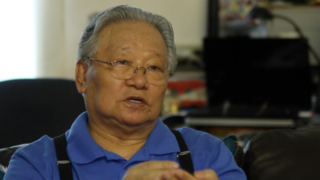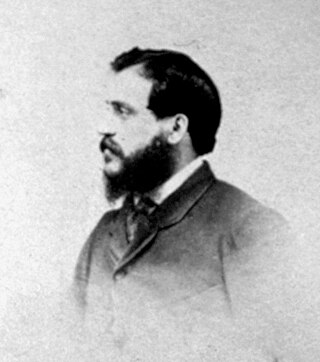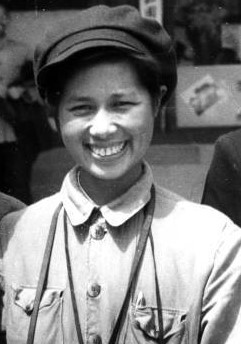Felice A. Beato and Felice Antonio Beato are collective signatures used by the brothers Felice Beato and Antonio Beato, who were both pioneering photographers in the 19th century. They were noted for their depictions of everyday life in Orient.

James Robertson (1813–1888) was an English gem and coin engraver who worked in the Mediterranean region, and who became a pioneering photographer working in the Crimea and possibly India. He is noted for his Orientalist photographs and for being one of the first war photographers.

Li Zhensheng was a Chinese photojournalist who captured important images from the Great Proletarian Cultural Revolution, better known as the Chinese Cultural Revolution.

Antonio Beato (1835–1906), also known as Antoine Beato, was an Italian-British photographer. He is noted for his genre works, portraits, views of the architecture and landscapes of Egypt and other locations in the Mediterranean region. He was the younger brother of photographer Felice Beato (1832–1909), with whom he sometimes worked. Antonio and his brother were part of a small group of commercial photographers who were the first to produce images of the Orient on a large scale.

Adolfo Farsari was an Italian photographer based in Yokohama, Japan. His studio, the last notable foreign-owned studio in Japan, was one of the country's largest and most prolific commercial photographic firms. Largely due to Farsari's exacting technical standards and his entrepreneurial abilities, it had a significant influence on the development of photography in Japan.

Felice Beato, also known as Felix Beato, was an Italian–British photographer. He was one of the first people to take photographs in East Asia and one of the first war photographers. He is noted for his genre works, portraits, and views and panoramas of the architecture and landscapes of Asia and the Mediterranean region. Beato's travels gave him the opportunity to create images of countries, people, and events that were unfamiliar and remote to most people in Europe and North America. His work provides images of such events as the Indian Rebellion of 1857 and the Second Opium War, and represents the first substantial body of photojournalism. He influenced other photographers, and his influence in Japan, where he taught and worked with numerous other photographers and artists, was particularly deep and lasting.
Thomas Hodges is a modern-day British artist, working primarily with photography, and is best known for his nude-art work.

Hou Bo was a Chinese photographer who, with her husband Xu Xiaobing, was among the best known photographers of Mao Zedong. Born into a poor peasant family, Hou Bo joined the Communist Party at the age of fourteen and learned photography during the Second Sino-Japanese War in order to present a better image of the Party's work to the world. After 1949, she and Xu Xiaobing lived in the same compound as Mao and took both official photos, some used for posters and publicity, which became the most widely circulated photos of Mao, and some family photos, taken informally behind the scenes.

William Thomas Saunders (1832–1892) was a British-born photographer who settled in China and became the leading photographer in Shanghai during the late Qing dynasty. He was the first photographer known to produce hand-coloured photographs in China.
Tchan Fou-li was a Hong Kong photographer who worked to develop distinctive Chinese forms of photography and to establish photography as a serious art form in Hong Kong. He is known for his photographs, described as evoking the artistic values and composition of Chinese landscape paintings. A New York Times reviewer called him "one of the great visual artists of his time" because of his "carefully crafted images that celebrate the beauty of the human condition and the majesty of nature."

Almond CHU is a Hong Kong-based artist and photographer, known for his black and white photographs and large format conceptual color images.

Lai Afong was a Chinese photographer who established Afong Studio, considered to be the most successful photographic studio in the late Qing Dynasty. He is widely acknowledged as the most significant Chinese photographer of the nineteenth century.
Lü Houmin was a Chinese photographer who gained national and international recognition for taking official photographs of Chinese leaders, most notably Mao Zedong, from 1950 to 1964. Lü started out as a teacher, and later switched to photography. He was called Mao's private photographer because many of his photographs were different from the official ones, showing Mao in a more relaxed and personal manner.

Xu Xiaobing 徐肖冰 was a Chinese cinematographer, filmmaker, and photojournalist. The Chinese Communist Party commissioned Xu and his wife, Hou Bo, to make an official photographic record to share with the Chinese and world public of Party leaders, scenes of battle, and vignettes of everyday life during the Second Sino-Japanese War (1937–1945) and especially of Mao Zedong from the 1930s down to the 1960s. The couple shot many of the best-known photos of Mao and other leaders.
Holly Lee, born 1953 in Hong Kong, is an artist-photographer, best known for her portraits project, the Hollian Thesaurus. She was one of the pioneers of conceptual photography in Hong Kong, experimenting with Photoshop to create composite photographs that were reminiscent of oil paintings. Her work has been collected by the Hong Kong Heritage Museum and M+ Museum.
Xiao Zhuang, previously named Zhuang Dongying (庄冬莺), is a Chinese photographer and photo editor.

Liang Shitai 梁时泰 – also known as Liang Seetay – was one of the foremost portrait photographers working in China in the late Qing dynasty. The artist specialized in portraits of high-ranking officials, and photographs that appealed to Chinese clients interested in literati painting. As one of the first photographers of prominent Qing Dynasty officials and other distinguished citizens, Liang Shitai's work convinced the Qing court to embrace photography as an artistic medium for the first time. He established his studio in Hong Kong in the early 1870s, then relocated to Shanghai in the late 1870s, and later to Tianjin in the 1880s. Liang Shitai's photographs are among the most historically important and visually exquisite of their time.

Thomas Child (1841–1898) was an English photographer and engineer best known for his pioneering photography work in China. Child produced a large body of photographs during his time in Beijing in the 1870s and 1880s, a time when virtually no other photographers operated in the city. During the two decades he spent in China, Child compiled the earliest comprehensive photographic catalogue of the customs, architecture, and people of late Qing dynasty Beijing. A keen photographer of architecture, some of Child's images are among the earliest and the only known photographic records of their architectural subjects.
Chang Tsai was a Taiwanese photographer born in Taipei's Dadaocheng district. In his youth, he was influenced by his older brother, Chang Wei-hsien (張維賢), and went to Japan to study photography. Chang was active during the 1930s to 1950s. In 2014, he was selected as one of the 30 most influential photographers in Asia by IPA.















